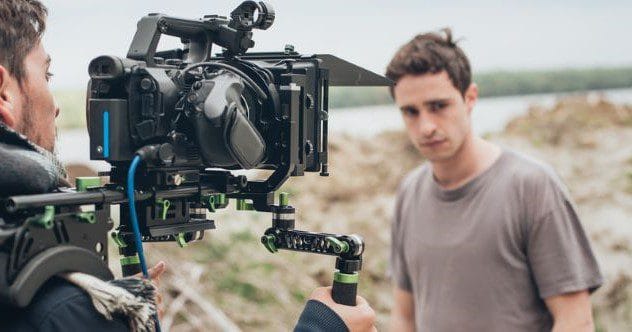Celebrities appearing as themselves in movies can range from simple cameos to significant roles that demand actual acting. Think Tom Brady in 80 for Brady (2023) or LeBron James in Trainwreck (2015). Sometimes even real journalists present fake reports to boost the realism of action or political films. For various reasons, famous folks have been portraying fictional versions of themselves for over a century, even before talking pictures!
10 Babe Ruth
Before becoming a Hall of Famer with three World Series titles with the Red Sox, George Herman “Babe” Ruth starred in Headin’ Home (1920). It was a cheesy melodrama claiming to be his “true” life story. Ruth wasn’t an actor, but he was promised $50,000, five times his baseball salary from the previous season. Sadly, his contract was as untrue as the movie. He received $15,000 upfront, but the check for the rest bounced.
Ruth returned in Speedy (1928), enduring a crazy cab ride to Yankee Stadium with comedian Harold Lloyd, who played a crazed baseball fan. The director wanted real footage of Ruth hitting a homer. On filming day, the Bambino hit one into the seats on his first try—no acting needed.
9 Lou Gehrig
Speedy also featured Lou Gehrig in a three-second cameo, sticking his tongue out at the camera. A decade later, Gehrig starred in Rawhide (1938), a B-grade Western where his fictional retirement leads him to buy a Montana ranch with his fictional sister. They help locals fight a protection racket.
Since the Iron Horse had never ridden a horse, the script adapted to his persona. Instead of punches in a bar fight, he throws pool balls to knock out the bad guys.
Gehrig was considered for Tarzan, but Edgar Rice Burroughs, the character’s creator, reacted to the screen test, saying, “Having seen several pictures with you as Tarzan… I want to congratulate you on being a swell first baseman.” His movie career ended after two appearances.
8 Tom Harmon
Tom Harmon, a football star from the University of Michigan, won the Heisman Trophy in 1940. His fame led to lunch with President Roosevelt, a Royal Crown Cola endorsement, and a $13,500 contract for Harmon of Michigan (1941). Despite claims it was his life story, the movie quickly went into fantasyland following his college career, showing his marriage and coaching jobs.
Injuries during his time in the Army Air Corps cut his pro football stint short but didn’t kill his film interest. After the war, he played himself in Gentleman Joe Palooka (1946), Triple Threat (1948), Bonzo Goes to College (1952), and All American (1953).
His broadcasting career led to roles as a sports broadcaster in films like Pat and Mike (1952). His screen career also led him to meet actress Elyse Knox, whom he married in 1944. Their son Mark, a UCLA quarterback, achieved the acting stardom his father never did.
7 The Beatles
Before MTV, A Hard Day’s Night (1964) gave fans 87 minutes of John Lennon, Paul McCartney, George Harrison, and Ringo Starr, each playing their assigned role: the clever one, the cute one, the shy one, the overlooked one. Shot for $500,000 and released shortly after their debut on The Ed Sullivan Show, the black-and-white film showed a playful version of a typical Beatles day with songs, fans, and run-ins with the law.
United Artists made the film to exploit a gap in The Beatles’ contract with Capitol Records. They expected record sales to make them money, but the movie became a hit as well.
Fresh off this success, The Beatles returned in Help! (1965), playing even zanier versions of themselves. Magical Mystery Tour (1967), a psychedelic adventure written and directed by The Beatles for British TV, was heavy on music but short on plot. Lennon called it “the most expensive home movie ever made.”
To complete their contract with United Artists, The Beatles allowed their names and likenesses in the animated feature Yellow Submarine (1968), but their characters were voiced by others. Impressed, they appeared in a live-action epilogue.
6 Detroit Lions
When George Plimpton wanted to research an article for Sports Illustrated, he convinced the Detroit Lions to let him pretend to be a rookie. The memoir became the movie Paper Lion (1968), with Alan Alda playing Plimpton. The film included a disclaimer, noting it was an “amiable fiction.”
The cast was full of Lions, including head coach Joe Schmidt, line coach Chuck Knox, wide receiver Pat Studstill, linebacker Mike Lucci, defensive back Lem Barney, quarterback Karl Sweetan, and tough guy Alex Karras.
Several Lions had cameos in other football-themed movies. Karras had a long acting career after his playing days, most famously in Blazing Saddles (1974), Victor/Victoria (1982), and the TV series Webster (1983–1989).
5 Howard Cosell
Love him or hate him, sportscaster Howard Cosell was a household name when he opened Woody Allen’s satire Bananas (1971), providing “live-on-the-spot coverage” of an assassination in a fictional Latin American country. His style echoed his distinctive reporting, comparing events to the excitement of a Cassius Clay fight.
After shots are fired, Cosell interviews the loser/victim and congratulates the winner/new dictator. At the end, he returns to provide play-by-play as the hero consummates his marriage.
Cosell also appeared in episodes of The Partridge Family (1971), The Odd Couple (1972, 1975), The Hardy Boys/Nancy Drew Mysteries (1977), as well as Two-Minute Warning (1976) and Broadway Danny Rose (1984).
4 Ed Koch
Ed Koch, New York City mayor from 1978 to 1989, appeared in Barney Miller (1978) and My Two Dads (1988) before his big-screen debut in The Muppets Take Manhattan (1984), playing The Honorable Edward I. Koch.
He later played “Ed Koch” in Married to It (1991), Eddie (1996), First Wives Club (1996), and Redirecting Eddie (2008), as well as TV appearances on Picket Fences (1993, 1995) and Sex and the City (2001).
His face became so recognizable that when Tim Burton cast Lee Wallace as the mayor of Gotham City in Batman (1989), The Hollywood Reporter mistakenly identified the actor as Koch.
3 Howard Stern
For Private Parts (1997), based on Howard Stern’s autobiography, who else but Stern could play the lead? He went straight to the film set after his morning show and was surprised to learn he had to memorize lines.
Stern was critical of his appearance and asked to change a shot taken from his “bad side.” Director Betty Thomas said she had no other angle, so Stern got a nose job, requiring her to reshoot from a distance.
While sidekicks Robin Quivers and Fred Norris also played themselves, Luke Perry declined to play Fartman, fearing the movie would be bad.
2 John Malkovich
Charlie Kaufman took a gamble pitching a film needing a specific actor, but he pulled it off. Being John Malkovich (1999) is about a puppeteer who finds a portal into Malkovich’s mind. He sells the experience and then uses it himself.
Malkovich loved the script and offered to produce the film but thought someone else should star. He eventually agreed to play the fictional “John Horatio Malkovich,” approaching it as any other role.
1 Neil Patrick Harris
Neil Patrick Harris learned about his role in Harold & Kumar Go to White Castle (2004) when a friend mentioned a bizarre version of Harris in a film. He had his agent follow up.
He found the script funny and was “flattered” to be included. The film’s version of Harris as a drug-using hitchhiker was far from Doogie Howser, MD (1989–1993). The movie played off that contrast.
Despite worrying about jumping the shark, Harris reprised the role twice. In Harold & Kumar Escape from Guantanamo Bay (2008), his character swallows shrooms and hallucinates rainbows and a unicorn. A Very Harold & Kumar Christmas (2011) finds Harris singing and dancing through holiday songs in a red tuxedo.
These actors and sports figures added an extra layer of entertainment by playing fictionalized versions of themselves. It’s a unique form of cameo that often provides some of the biggest laughs!
Which of these self-cameos is your favorite? Leave your comment below!










